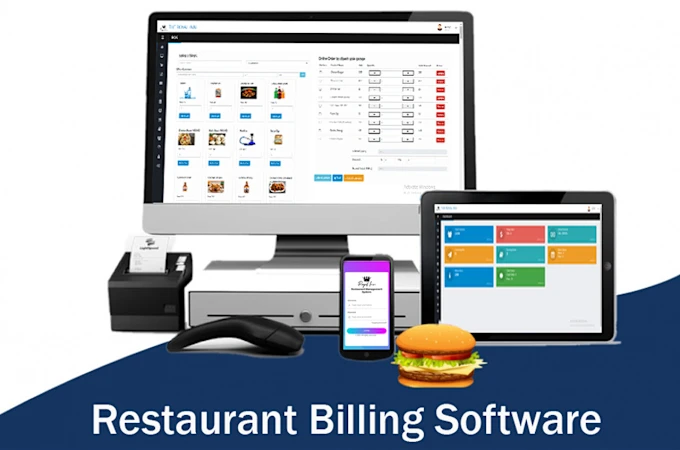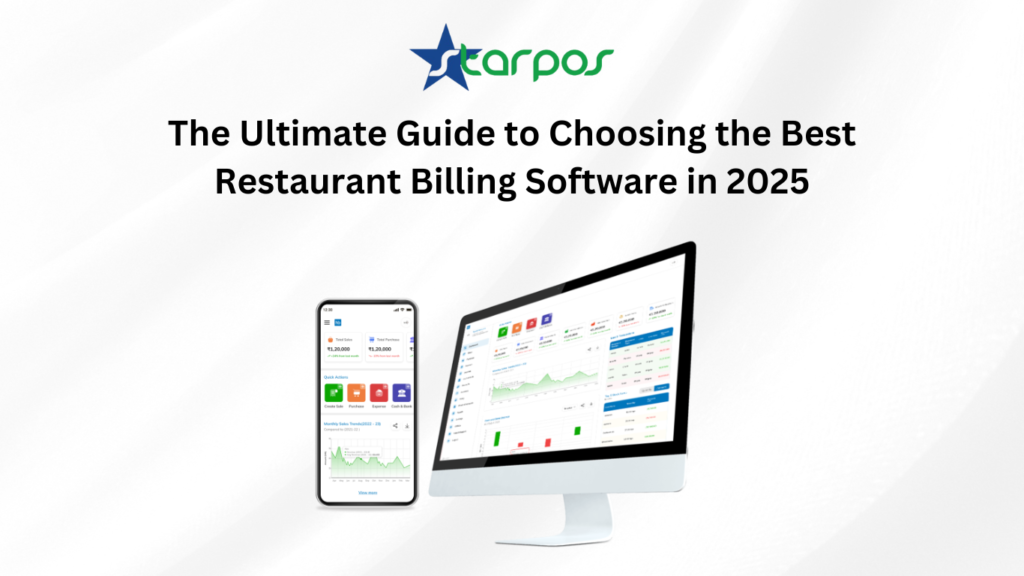In today’s fast-evolving restaurant industry, selecting the right billing software is crucial for efficiency and profitability. Modern restaurants require software that not only handles billing but also integrates with various operational aspects such as online orders, inventory, and customer management. In this blog, we will explore the types of restaurant billing software best suited for current times and their key management features.
Types of Restaurant Billing Software to Use Today
1. Cloud-Based POS Systems
Cloud-based billing software allows restaurant owners to access real-time data from anywhere, making it ideal for multi-location businesses. It enables automatic updates, data security, and seamless integration with third-party applications like accounting software, CRM, and delivery platforms.
2. Mobile and Tablet POS Systems
With the rise of contactless transactions, mobile and tablet POS systems provide flexibility for waitstaff to take orders and payments at the table. These systems improve service speed and enhance customer experience while reducing wait times.
3. AI-Powered Billing Software
Artificial intelligence is revolutionizing restaurant operations. AI-driven billing software helps in predictive analytics, automated customer recommendations, and intelligent reporting, allowing restaurant owners to make data-driven decisions and improve business efficiency.
4. Integrated Online Ordering and Delivery POS
With the increasing reliance on online food ordering, restaurants need billing software that seamlessly integrates with platforms like Swiggy, Zomato, and Uber Eats. This ensures smooth order processing, real-time syncing, and accurate billing, reducing manual work and errors.
5. Self-Service Kiosk POS
For quick-service restaurants and fast food chains, self-service kiosk POS systems enable customers to place their orders and make payments independently. This reduces dependency on staff, speeds up service, and enhances customer satisfaction.
Key Management Features of Modern Restaurant Billing Software
1. Order and Billing Management
Modern software should allow quick order-taking, modifications, split billing, discounts, tax calculations, and multiple payment modes (cash, card, UPI, wallets). A smooth and efficient billing process ensures customer satisfaction.
2. Inventory and Stock Management
Real-time inventory tracking, automated stock updates, and low-stock alerts are crucial features. Integration with recipe management prevents wastage and helps optimize food costs.
3. Customer Relationship Management (CRM)
Storing customer details, tracking order history, running loyalty programs, and automating feedback collection help in retaining customers and enhancing their experience.
4. Reporting and Analytics
Data-driven insights, such as sales reports, tax summaries, employee performance tracking, and expense analysis, allow restaurant owners to make informed decisions and improve profitability.
5. Multi-Channel Integration
Seamless integration with online orders, delivery platforms, payment gateways, and accounting software ensures a streamlined operation and enhances business efficiency.
Conclusion
In the current digital era, restaurants must choose billing software that aligns with modern business demands. Whether it’s cloud-based POS, AI-powered analytics, or self-service kiosks, selecting the right software can optimize operations and drive profitability.



Pingback: 5 Key Management Features | Restaurant billing software